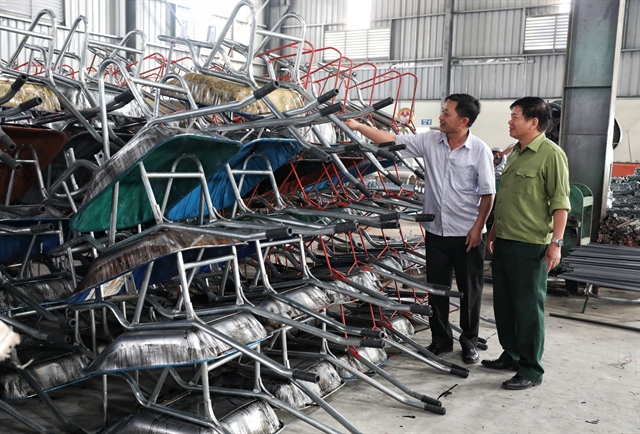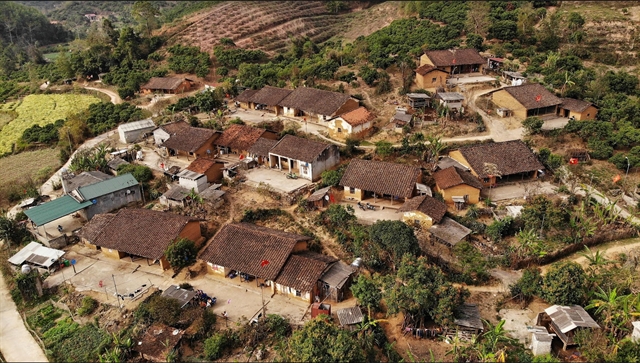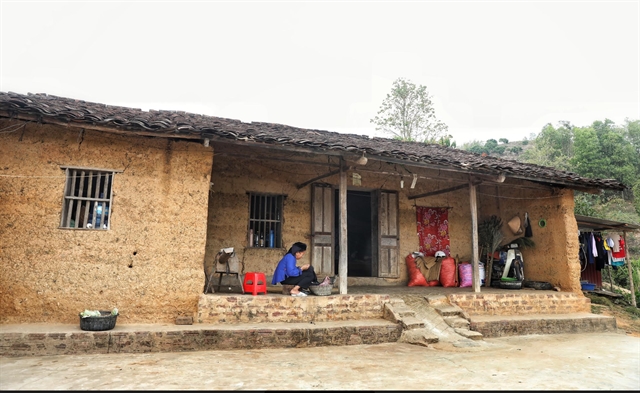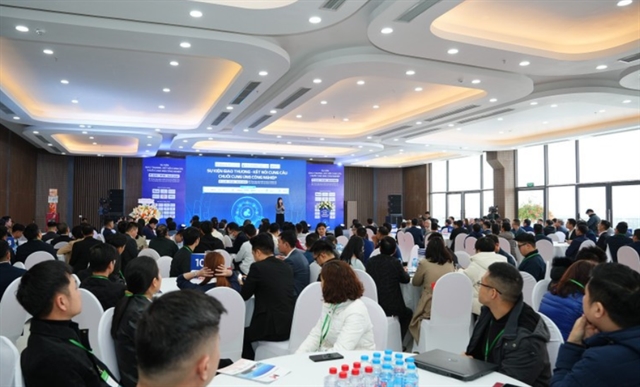 Society
Society

 |
| Bắc Hoa Village, in Lục Ngạn District, Bắc Giang Province currently has nearly 160 households of mainly Nùng ethnic people living in ancient 'nhà trình tường' (rammed earth houses). VNA/VNS Photo |
BẮC GIANG - The northern mountain province of Bắc Giang is striving to fulfill its target of receiving over three million tourists by 2025 and a vision to 2030 with a focus on community-based tourism development.
"Bắc Giang Province is actively implementing a local community tourism development project until 2030," according to Mai Sơn, Vice Chairman of the provincial People's Committee.
The province aims to recognise community-based tourism sites with specific tourism products by 2025. It also plans to boost investment in building and developing two pilot tourism models in Lục Ngạn District, while at the same time continue to support current community tourism destinations.
By 2030, Bắc Giang will continue to support community tourism in Lục Ngạn, Lục Nam, Yên Thế, Việt Yên, and Sơn Động districts, especially 20 community tourism destinations in the Lục Ngạn fruit tree region.
It has set a target of attracting three million tourists in the coming years. Revenue is expected to reached over VNĐ450 billion (US$18.4 million) and jobs will be created for over 5,000 labourers.
In the period 2022-30, the province will focus on developing community-based tourism models combined with cultural, spiritual and historical, agricultural, ecological, and experiential farm tourism (Farmstay). Other types of tourist services, such as culinary, shopping, health and beauty salon (Wellness Tourism), are also among the tourism activities. The province's community tourism products are widely promoted through digital communication platforms.
 |
| An ancient 'nhà trình tường' with yin and yang tile roof in Bắc Hoa Village, Lục Ngạn District, Bắc Giang Province. VNA/VNS Photo |
In particular, in the period 2022-25, Bắc Giang will build and operate two pilot community tourism models, complete the infrastructure system of community tourism destinations, promote and call for investment in community-based tourism and build community tourism apps.
In the period 2025-30, the province will replicate the community tourism model in qualifying areas, operate distribution and promoting channels for community tourism, build supportive products and linkages for community tourism products of localities inside and outside the province.
To achieve these goals, Bắc Giang has synchronously undertaken many activities including investments in infrastructure for smart community tourism, improvement of State management, and development of human resources and tourism markets.
Director of the provincial Department of Culture, Sports and Tourism Trương Quang Hải said: "Bắc Giang is the ancient land of Kinh Bắc, where traditions are kept with a rich and diverse cultural system. It also possesses rich natural resources and can be considered a 'gold mine' for tourism development."
The province has 2,300 historical relics, with highlights including Xương Giang ancient citadel in Bắc Giang City, Yên Thế Uprising Relic Site, the ATK II Revolutionary Relic in Hiệp Hòa District, Vĩnh Nghiêm Pagoda in Yên Dũng District - a place to store woodblocks with 3,050 engraved boards recognised by UNESCO as World Memory Heritage in the Asia-Pacific region in 2012 - Bổ Đà Pagoda in Việt Yên District and many others.
Bắc Giang is geographically located near the capital city of Hà Nội, an airport, seaport, and an international border gate. It is connected with domestic economic and tourism hubs including Hà Nội, Bắc Ninh, Hải Dương, Quảng Ninh, Lạng Sơn and Thái Nguyên and economic and tourism centres in southeast China such as Pingxiang and Nanning through important transport routes by road, railway, and waterway.
The locality also has many valuable humanistic and natural tourism resources that can be exploited and developed such as cultural - spiritual, historical - cultural, ecological - resort tourism, among others.
Bắc Giang has terrain of plains and high mountains creating attractive landscapes of rugged peaks, waterfalls, rich flora and fauna such as the Tây Yên Tử scenic area with Khe Rỗ primeval forest, Đồng Cao Plateau, Suối Mỡ eco-tourist site, Khuôn Thần and Cấm Sơn lakes, Nham Biền mountain range and the fruit gardens in Lục Ngạn District.
The province is also well known for its intangible cultural heritage such as quan họ (love duet singing) and ca trù (ceremonial singing). Some 18 ancient quan họ and ca trù villages and many other unique cultural features of the ethnic people are also preserved across the province.
In 2023, the total number of tourists to Bắc Giang reached 2.05 million, including 16,250 foreigners. Revenue from tourism activities in the province was estimated at about VNĐ1.45 trillion. Many tourist areas and destinations in the province have effectively developed new tourism products and have attracted more visitors.
Ngô Cao Kiên, Director of Bản Ven Xanh Community Tourism Development Joint Stock Company in Yên Thế District, said the company has invested in developing new community tourism products since 2022 such as camping in bamboo forests, tours of sheep, goat and rabbit farms, stilt houses, and tea hills. The company's tourist services have received good responses from visitors, according to the company director. VNS


.jpg)

